Mayank Shekhar Jha
CRAN
Remaining Useful Life Prediction of Lithium-ion Batteries using Spatio-temporal Multimodal Attention Networks
Oct 29, 2023

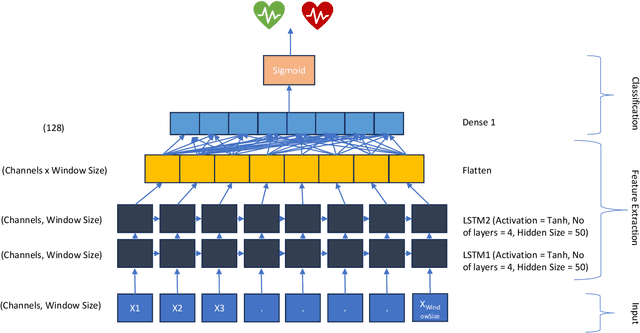

Abstract:Lithium-ion batteries are widely used in various applications, including electric vehicles and renewable energy storage. The prediction of the remaining useful life (RUL) of batteries is crucial for ensuring reliable and efficient operation, as well as reducing maintenance costs. However, determining the life cycle of batteries in real-world scenarios is challenging, and existing methods have limitations in predicting the number of cycles iteratively. In addition, existing works often oversimplify the datasets, neglecting important features of the batteries such as temperature, internal resistance, and material type. To address these limitations, this paper proposes a two-stage remaining useful life prediction scheme for Lithium-ion batteries using a spatio-temporal multimodal attention network (ST-MAN). The proposed model is designed to iteratively predict the number of cycles required for the battery to reach the end of its useful life, based on available data. The proposed ST-MAN is to capture the complex spatio-temporal dependencies in the battery data, including the features that are often neglected in existing works. Experimental results demonstrate that the proposed ST-MAN model outperforms existing CNN and LSTM-based methods, achieving state-of-the-art performance in predicting the remaining useful life of Li-ion batteries. The proposed method has the potential to improve the reliability and efficiency of battery operations and is applicable in various industries, including automotive and renewable energy.
Two-stage Early Prediction Framework of Remaining Useful Life for Lithium-ion Batteries
Aug 07, 2023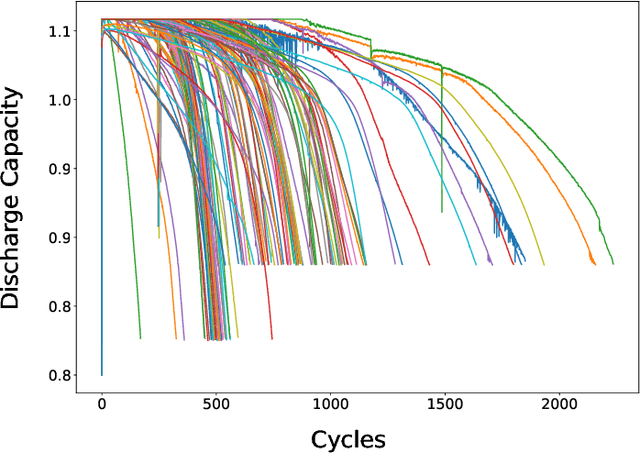
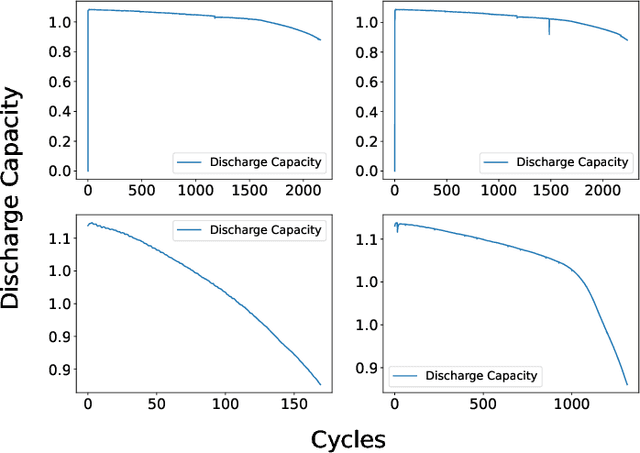

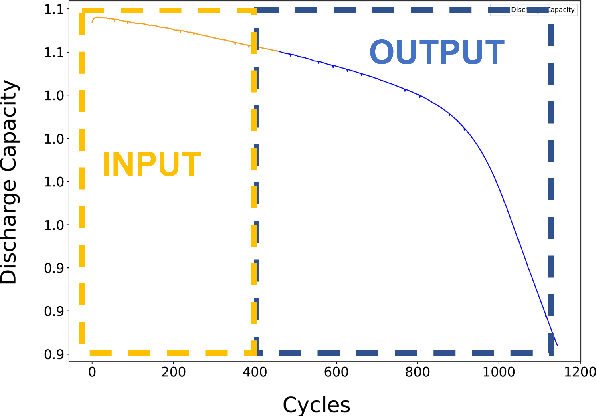
Abstract:Early prediction of remaining useful life (RUL) is crucial for effective battery management across various industries, ranging from household appliances to large-scale applications. Accurate RUL prediction improves the reliability and maintainability of battery technology. However, existing methods have limitations, including assumptions of data from the same sensors or distribution, foreknowledge of the end of life (EOL), and neglect to determine the first prediction cycle (FPC) to identify the start of the unhealthy stage. This paper proposes a novel method for RUL prediction of Lithium-ion batteries. The proposed framework comprises two stages: determining the FPC using a neural network-based model to divide the degradation data into distinct health states and predicting the degradation pattern after the FPC to estimate the remaining useful life as a percentage. Experimental results demonstrate that the proposed method outperforms conventional approaches in terms of RUL prediction. Furthermore, the proposed method shows promise for real-world scenarios, providing improved accuracy and applicability for battery management.
A Reinforcement Learning Approach to Health Aware Control Strategy
Oct 19, 2020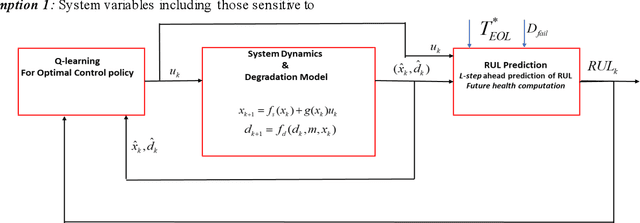
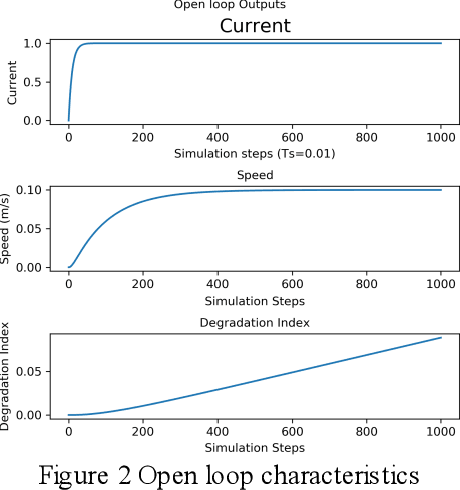
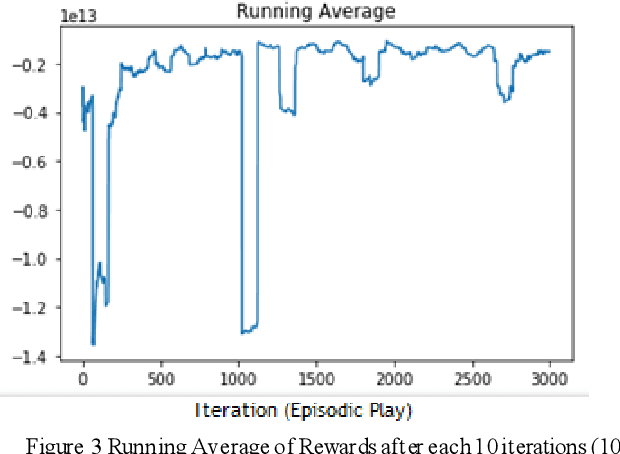
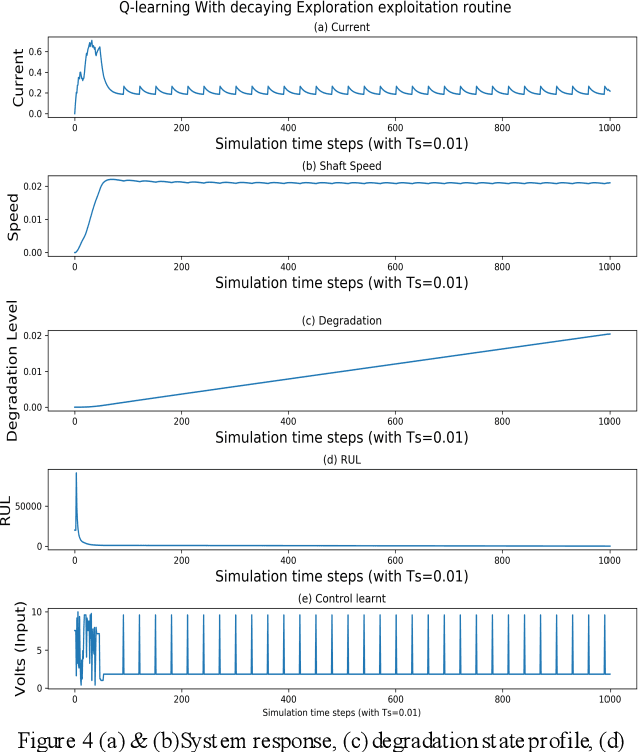
Abstract:Health-aware control (HAC) has emerged as one of the domains where control synthesis is sought based upon the failure prognostics of system/component or the Remaining Useful Life (RUL) predictions of critical components. The fact that mathematical dynamic (transition) models of RUL are rarely available, makes it difficult for RUL information to be incorporated into the control paradigm. A novel framework for health aware control is presented in this paper where reinforcement learning based approach is used to learn an optimal control policy in face of component degradation by integrating global system transition data (generated by an analytical model that mimics the real system) and RUL predictions. The RUL predictions generated at each step, is tracked to a desired value of RUL. The latter is integrated within a cost function which is maximized to learn the optimal control. The proposed method is studied using simulation of a DC motor and shaft wear.
 Add to Chrome
Add to Chrome Add to Firefox
Add to Firefox Add to Edge
Add to Edge